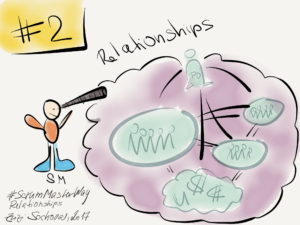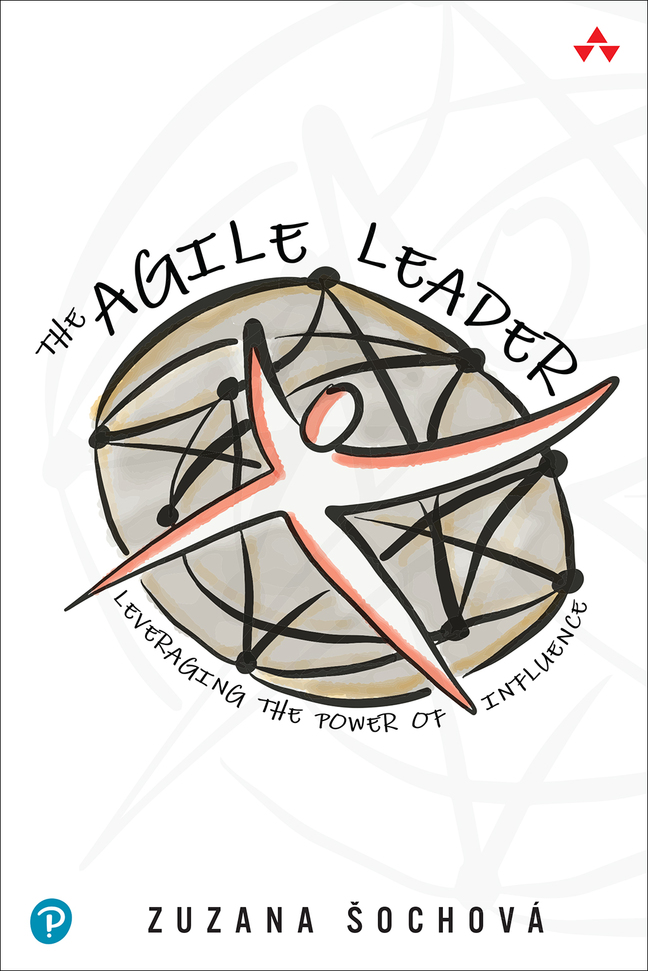The world dimension of #ScrumMasterWay concept represents three levels ScrumMasters shall operate. The second element is called Relationships. Though the time and energy ScrumMasters spend on each level differ based on the team or organizational culture and maturity level, they have to be present at every level to keep an eye on changes. If you do it right, and your organization is not too dysfunctional with a lot of politics and difficult stakeholders and product structure, what you build at the Relationship level, could be sustainable in about three years and gradually you may gain more and more time to the next level of the Entire system.
Level 2: Relationships
The Relationship level brings higher perspective. You are not focusing on the elements of the Myself dimension to the development team only but to the broader system. You look after all relationships your team has with anyone outside and use the mix of aspects from Metaskills, Learning, State of Mind and Leadership elements to improve them.
ScrumMasters focus their teaching, mentoring, facilitation, and coaching skills to improve relationships between the development team and Manager, Product Owner, customers, stakeholders, and other teams. For example, you may coach the Product Owner to build a great vision, facilitate conversation with other teams, help the manager to understand how to change the performance reviews, and much more. Whatever helps the bigger eco-system to become self-organized, consistent and coherent.

At this level, the eco-system begins to use the high capacity of the previously created high-performing teams in a meaningful way. We maximize work not done, is in the Agile manifesto. Too many companies are using Scrum just as a tool to deliver any idea which goes around. This level helps organizations to prioritize and focus on true value delivery. There are thousands of practices from this space you can teach (Story mapping, splitting patterns, Impact mapping, Lean startup, beyond budgeting, management 3.0). The list never ends, so keep in mind that it’s not about practices despite the fact that they can be useful but it’s about building the right Agile mindset. Increase transparency and openness. Help them to become a great team together with one goal.

 Learn more about transforming organizations, leadership, and culture with Agile & Enterprise Coaching. Check our Scrum and Agile training sessions on Sochova.com. Grab a copy of The Great ScrumMaster: #ScrumMasterWay book and The Agile Leader: Leveraging the Power of Influence book.
Learn more about transforming organizations, leadership, and culture with Agile & Enterprise Coaching. Check our Scrum and Agile training sessions on Sochova.com. Grab a copy of The Great ScrumMaster: #ScrumMasterWay book and The Agile Leader: Leveraging the Power of Influence book.
Disclaimer: All I write on this blog is purely personal and has no relation with any position I have, used to have or will have in the future.
